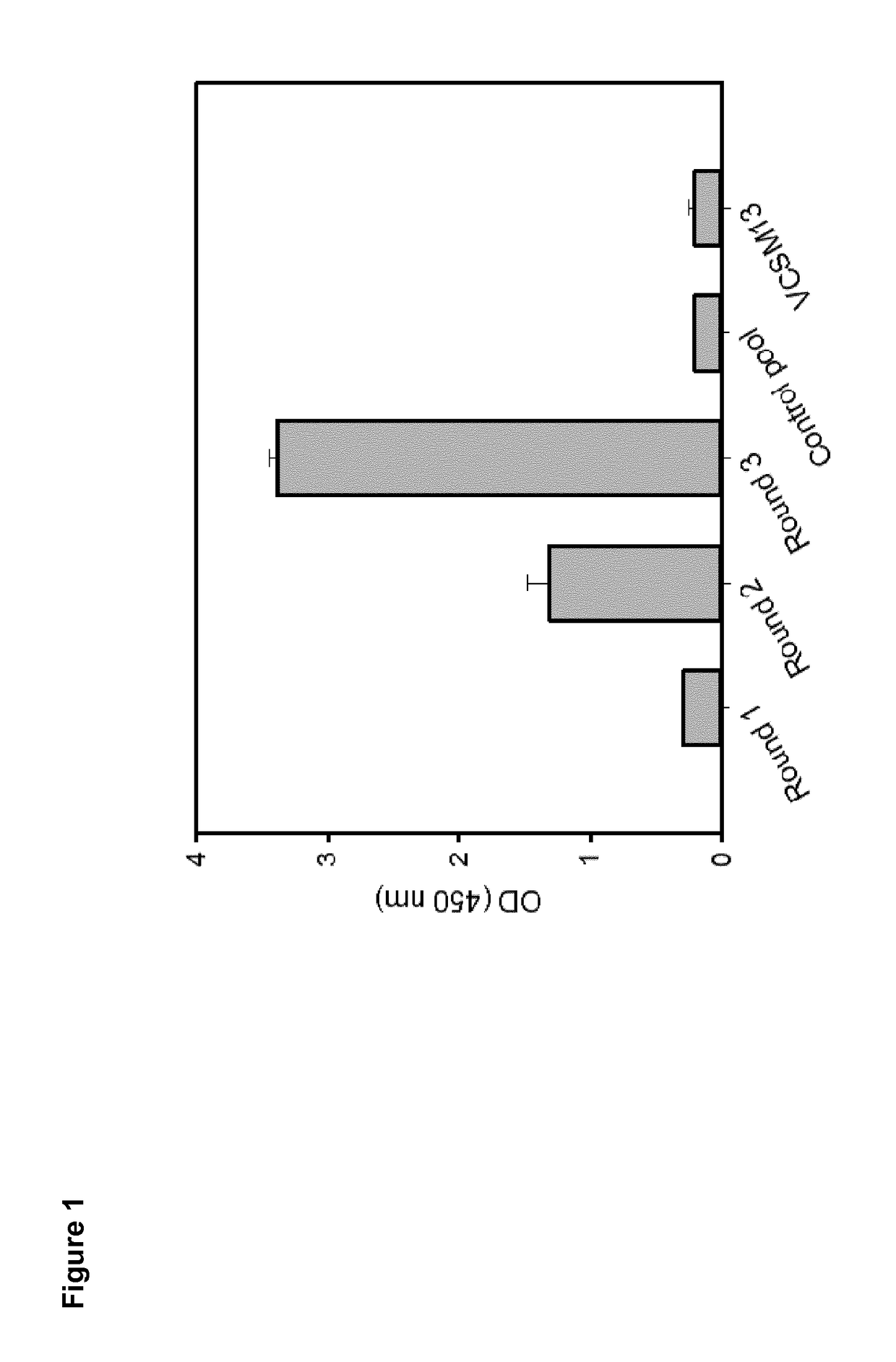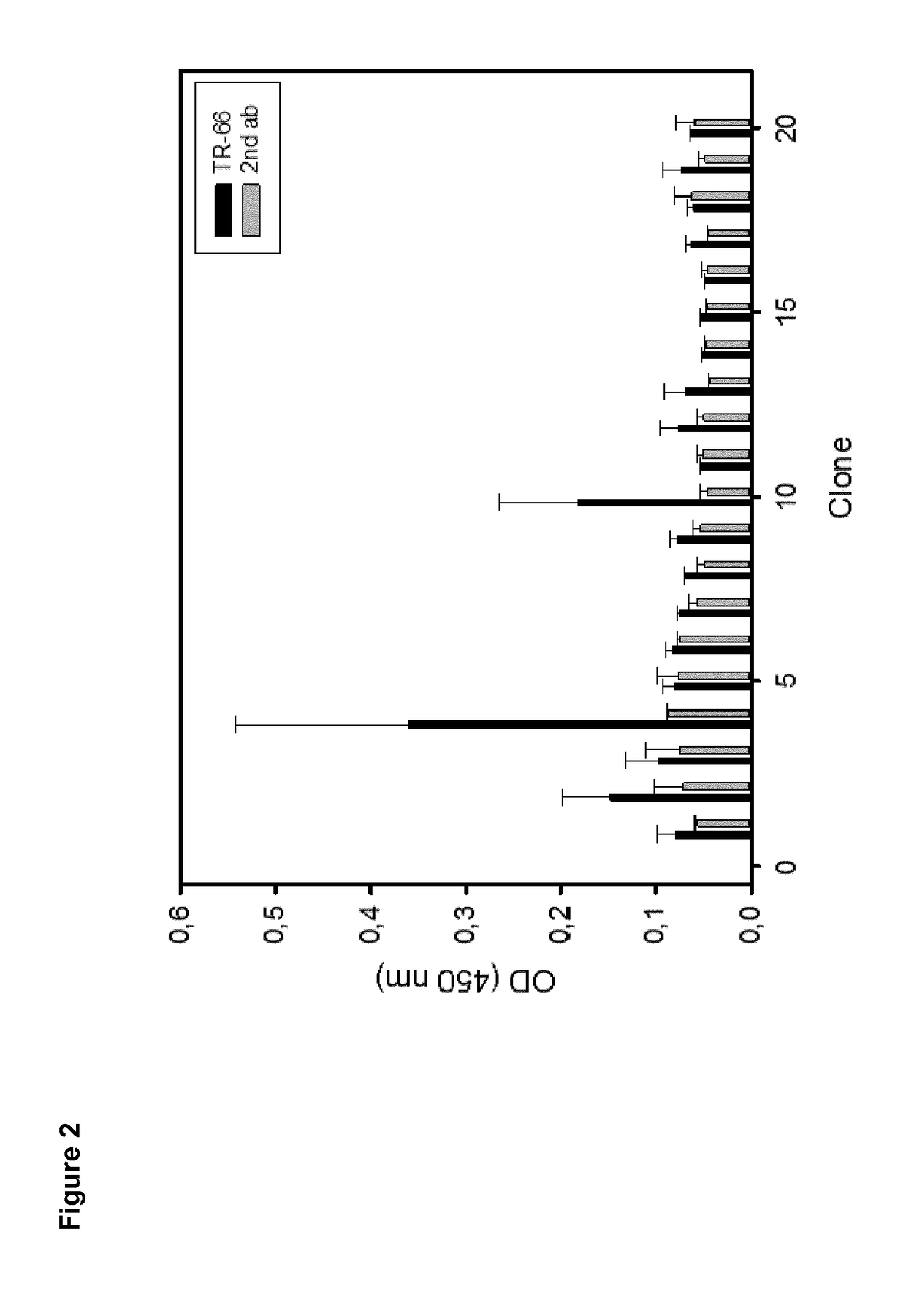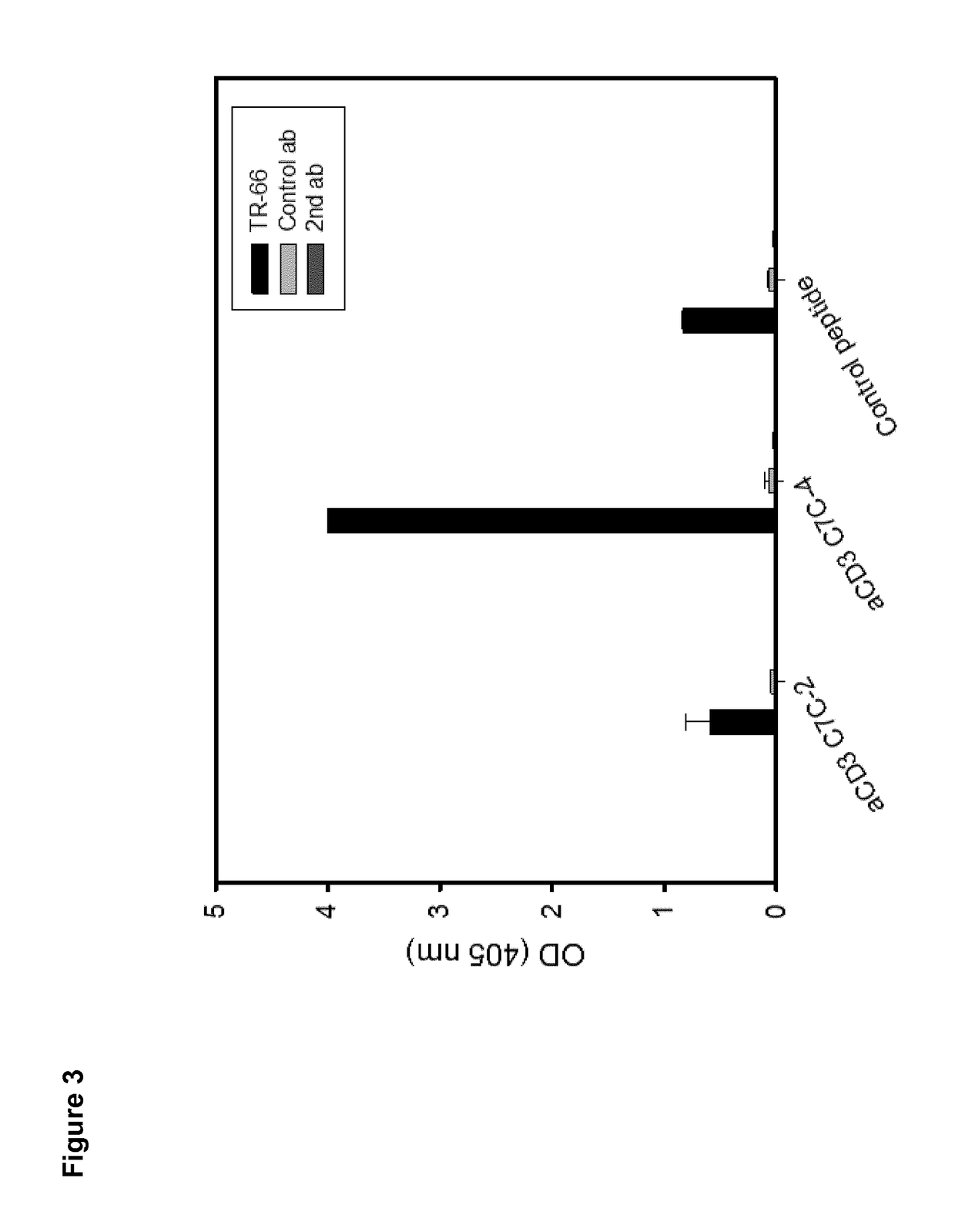Peptide mimotopes of the cd3 t-cell co-receptor epsilon chain and uses thereof
a technology of t-cell coreceptor and peptide mimotope, which is applied in the direction of peptides, peptide/protein ingredients, instruments, etc., can solve the problems of time-consuming and expensive generation of anti-idiotypic antibodies, difficult production and handling of transmembrane proteins, etc., and achieves rapid optimization of binding properties and generates or inhibits immune responses
- Summary
- Abstract
- Description
- Claims
- Application Information
AI Technical Summary
Benefits of technology
Problems solved by technology
Method used
Image
Examples
example 1
and Methods
[0240]Phage Display Selection:
[0241]TR66 binding peptides were identified by phage display technology using a Ph.D.™-C7C phage display peptide library kit (New England Biolabs) with a solution-phase panning protocol. For the panning 50 μl of Protein A Dynabeads (Invitrogen) were at first washed once with 1 ml of TBS-T buffer (50 mM Tris-HCl (pH 7.5), 150 mM NaCl+0.1% Tween-20) and subsequently blocked with 1 ml blocking buffer (3% BSA in TBS) for 1 h at 4° C. Afterwards, the beads were washed four times with 1 ml TBS-T buffer. A 100-fold representation of the library (1E+11 phages) was incubated with 100 nM of the antibody for 20 min at RT. Antibody-bound phages were captured with blocked Protein A beads by incubation for 15 min at RT with slight shaking. After incubation, beads were washed ten times with TBS-T to remove unbound phages. Elution was done by subsequent incubation with 50 μl of 100 mM triethylamine (for 6 min) and 50 μl of 100 mM glycine-HCl, pH 2 (for 10 mi...
example 2
of TR66-Specific Peptides by Phage Display
[0260]For the identification of CD3 T-cell co-receptor epsilon chain mimetic peptides phage display was performed using a disulfide-constrained random 7mer M13 phage library (New England Biolabs) and a CD3ε specific antibody (clone TR66). To ensure good accessibility of the antibody a selection in solution protocol with protein-A bead capture of binding phages was carried out. After three consecutive screening rounds with increased stringency an enrichment of target-specific phages could be observed, measured by dilution plating of input and output phages (Table 1) and an indirect phage ELISA (FIG. 1).
TABLE 1Enrichment of phages for each round of selection.RatioRoundInputOutputInput / Output1 E+125.2E+71.9E+42 1.2E+111.4E+88.3E+235.25E+111.4E+83.62E+3 The shown values are derived from titering the phage pools before each panning round (input) and the eluted phages (output). The decreasing ratio of input / output indicates an enrichment of phage...
example 3
sis and Optimization of TR66-Specific Peptides by Peptide Microarrays
[0262]Peptide microarrays were used for structure-activity-relationship (SAR) analysis and optimization of peptide binding affinity to TR66. For assay setup different variants of the cyclic hit peptide (aCD3 C7C-4) were prepared differing in a) the immobilization site, b) the linker nature and c) the degree of conformational restriction (cyclic vs. linear). All peptides were chemically synthesized in a stepwise fashion from the C- to the N-terminus by the high-throughput SPOT synthesis approach 19 applying a cellulose membrane as solid support. After cleavage and isolation, the peptides were cyclized through disulfide formation between two internal Cys residues and immobilized to the microarray. Covalent attachment to the microarray was performed through a reactive moiety on either the N- or C-terminus of the peptides allowing chemoselective and directed immobilization through both ends of the peptides. Subsequentl...
PUM
| Property | Measurement | Unit |
|---|---|---|
| concentration | aaaaa | aaaaa |
| concentrations | aaaaa | aaaaa |
| concentrations | aaaaa | aaaaa |
Abstract
Description
Claims
Application Information
 Login to View More
Login to View More - R&D
- Intellectual Property
- Life Sciences
- Materials
- Tech Scout
- Unparalleled Data Quality
- Higher Quality Content
- 60% Fewer Hallucinations
Browse by: Latest US Patents, China's latest patents, Technical Efficacy Thesaurus, Application Domain, Technology Topic, Popular Technical Reports.
© 2025 PatSnap. All rights reserved.Legal|Privacy policy|Modern Slavery Act Transparency Statement|Sitemap|About US| Contact US: help@patsnap.com



